Pond Life Identification Sheet
Pond water is teeming with a diverse array of microscopic organisms, making it a fascinating subject for observation under a microscope. Here are some of the organisms commonly found in pond water that can be viewed with a microscope:
Protozoa: These single-celled organisms are abundant in pond water and exhibit various shapes and behaviors. Examples include:
- Paramecium: Characterized by their slipper-like shape and cilia for movement.
- Amoeba: Known for their constantly changing shape and pseudopodia, which they use for locomotion and feeding.
- Euglena: Unicellular organisms with a flagellum for movement and chloroplasts for photosynthesis.
Algae: Algae are diverse photosynthetic organisms that can be found in various shapes, sizes, and colors. They include:
- Diatoms: Single-celled algae with intricate silica shells, often observed in diverse geometric patterns.
- Green algae: Unicellular or multicellular algae with chloroplasts containing chlorophyll, giving them a green coloration.
- Blue-green algae (Cyanobacteria): Photosynthetic bacteria often forming colonies or filaments, some of which can produce toxins under certain conditions.
Rotifers: These tiny, multicellular animals are commonly found in pond water. They have a wheel-like structure called a corona, which they use for feeding and locomotion.
Ciliates: Ciliates are a group of protozoans characterized by the presence of cilia, which they use for locomotion and feeding. Examples include various species of Vorticella and Stentor.
Crustaceans: Small crustaceans such as copepods and water fleas (Daphnia) are often present in pond water. These organisms are typically transparent and exhibit rapid movements.
Nematodes: Microscopic roundworms, or nematodes, are commonly found in pond water. They are often observed moving in a wriggling motion.
Insects & Arthropods

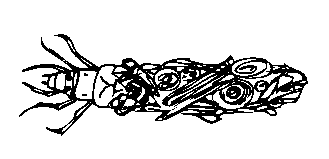 Caddisfly
larvae
Caddisfly
larvae
 dragonfly nymph
dragonfly nymph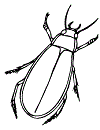 diving
beetle
diving
beetle 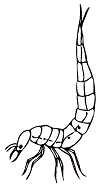 diving beetle larvae
diving beetle larvae
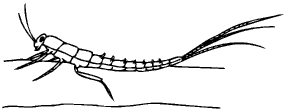 mayfly nymph
mayfly nymph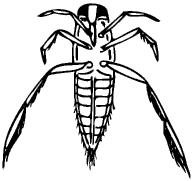 water
boatman
water
boatman
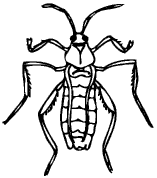 water cricket
water cricket water
scorpion
water
scorpion 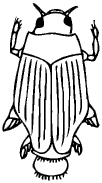 whirlygig
beetle
whirlygig
beetle
Protozoans and Small Animals

 Euglena
Euglena
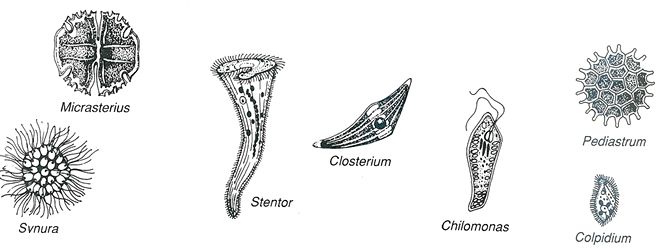
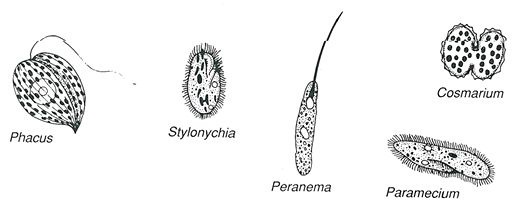

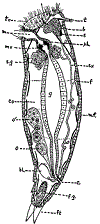
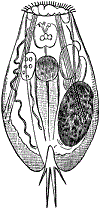 Rotifers
Rotifers 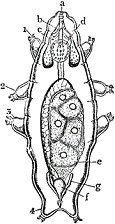 Waterbear (tardigrade)
Waterbear (tardigrade)
 Nematode
Nematode  Planarian
Planarian
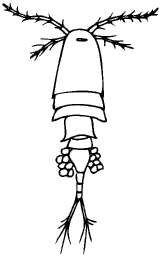 cyclops
cyclops 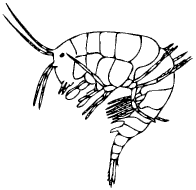 water
shrimp
water
shrimp water flea (Daphnia)
water flea (Daphnia)
Algae and Other Microorganisms
![]() Volvox (green)
Volvox (green) ![]() dinoflagellate (red, green, some multicolored)
dinoflagellate (red, green, some multicolored)
![]() Desmids (green)
Desmids (green)![]() Spirogyra
(green)
Spirogyra
(green)
Anything green and stringy can be classified as an algae!!!
Resources on Pond Life
Investigation: What Organisms Are Found in Ponds?
What Factors Affect the Heart Rate of Daphnia
Mic-UK - Pond Life Identification
Related Documents: Image Credits: Images were compiled from scans, public domain work and clipartETC